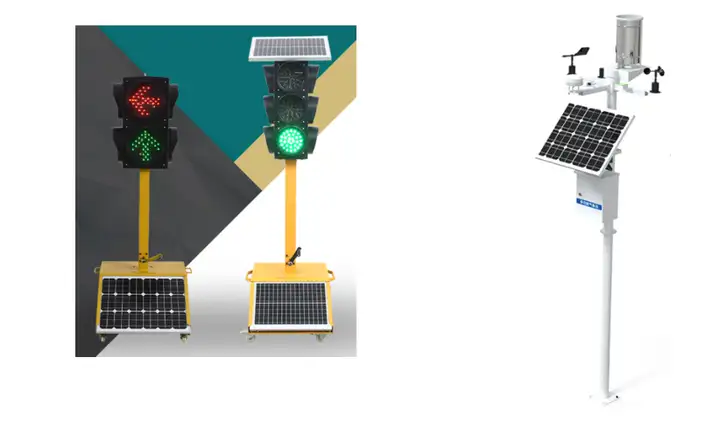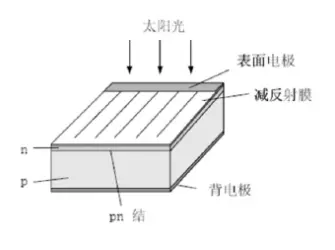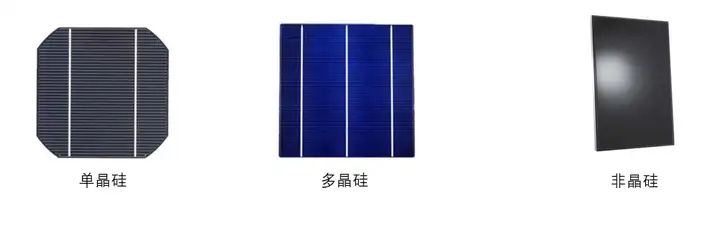Date: 2023-05-06 hits: 2551
Solar battery
A solar cell is a device that converts light energy into electricity. It is generally used in photovoltaic power stations and places where power supply is inconvenient; for example: solar street lights, garden lighting, solar signal lights, outdoor weather monitoring, geological monitoring, reservoir water conservancy monitoring, small base stations, etc.

Classification
At present, solar cells mainly use silicon solar cells, which dominate the application.
silicon solar cell
Silicon solar cells are composed of large-area PN junctions made of silicon semiconductor materials connected in series and in parallel. A metal grid line is made on the N-type material layer as a contact electrode, and a metal film is also made on the back side as a contact electrode, thus forming a solar panel. In order to reduce the loss of light emission, the surface is generally covered with an anti-reflection film. Mainly monocrystalline silicon solar cells, polycrystalline silicon solar cells and amorphous silicon solar cells.

Monocrystalline silicon solar cells
Monocrystalline silicon solar cells have the highest conversion efficiency, the highest experimental conversion efficiency is 25%, the actual conversion efficiency is about 18%, the service life is 15-25 years, and the cost is high. It still occupies a dominant position in large-scale applications and industrial production.
Polycrystalline silicon solar cells
The conversion efficiency of polycrystalline silicon solar cells is slightly lower, the highest conversion efficiency in the experiment is 20%, and the actual conversion efficiency is about 15%. The service life is lower than that of monocrystalline silicon, and the cost is low. At present, many photovoltaic manufacturers have mass-produced polysilicon.
Amorphous silicon solar cells
Amorphous silicon solar cells are low in cost and have good low-light effects, but their conversion efficiency is less than 10%, their service life is short, and their poor stability can easily cause photoelectric efficiency degradation, which affects their actual use.
Use of solar cells
Solar cells are generally not used alone, and need to be equipped with photovoltaic controllers and batteries to form a set of solar power.
Solar panels are the core part of solar photovoltaic power generation systems, which convert solar energy into electrical energy, usually using monocrystalline silicon or polycrystalline silicon panels. Monocrystalline silicon cells are the most commonly used cells due to their long service life (generally up to 20 years) and high photoelectric conversion efficiency.
Photovoltaic controller is mainly to protect the battery, with overcharge and overdischarge protection, power output control, charge trickle protection, temperature compensation and lightning protection and other functions. When the solar panel is charging the battery, if the battery voltage reaches the peak value and continues high-voltage charging, it will easily cause damage to the battery; but if charging is stopped at this time, the battery will not be saturated; so the controller will drop the voltage immediately after charging to the peak voltage, and then enter The trickle charging state ensures that the battery can be kept in a full state; it can effectively protect the battery and make it last longer.
The storage battery stores the electrical energy converted by the solar panel, usually a lithium battery or a lead-acid battery. Since the electricity generated by solar cells is direct current, an inverter (direct current to alternating current) needs to be installed to provide power to household appliances.
Precautions
What is the photovoltaic effect and how does solar energy generate electricity?
When light is irradiated on the semiconductor PN junction, after the semiconductor PN junction absorbs light energy, an electromotive force is generated at both ends. This phenomenon is called the photovoltaic effect. Since there is a strong built-in electric field in the depletion region of the PN junction, the electrons and holes generated in the depletion region move in opposite directions under the action of the built-in electrostatic field and leave the depletion region. The potential of the P region rises, the potential of the N region decreases, and a photoelectric electromotive force is formed at both ends of the PN junction, which is the photovoltaic effect of the PN junction.
Solar Panel Lifespan
The service life of solar panels is determined by the material. Silicon solar panels generally have a service life of 15 to 25 years, but with the influence of the environment, the materials of solar panels will age with time. Generally, the power will be attenuated by 30% after 20 years of use, and 70% after 25 years of use.
Can solar panels be used without batteries?
Solar panels are only devices that convert light energy into electrical energy and cannot store electrical energy. When the light is strong, a higher electromotive force can be generated; when the light is weak, only a lower electromotive force can be generated. The output voltage is very unstable and cannot normally supply power to electrical equipment. Through the voltage conversion module, the unstable voltage generated by the solar power generation panel is converted into a voltage suitable for charging the battery, and then charged to the battery. The electrical equipment obtains a relatively stable power supply voltage from the battery.
When the solar energy is charging the battery, can it supply power to the device at the same time?
In this case, the electricity used by the load will be directly used by the solar battery first, and the rest will be charged into the battery; on the contrary, if the power of the solar battery is not enough, it will be taken from the battery at the same time.
What is the difference between the use of solar cells in the south and the north?
The efficiency of solar photovoltaic power generation is affected by the amount of solar radiation. In areas with high latitude, the altitude angle of the sun will be smaller, and the solar radiation intensity will be weaker; in areas with low latitude, the sun altitude angle will be larger, so that the sun's radiation intensity will be stronger. In areas with low solar energy, the efficiency of solar power generation will be higher.
The higher the altitude, the thinner the air, the higher the transparency of the atmosphere, and the stronger the radiation of sunlight on the ground. Therefore, the higher the altitude, the greater the solar radiation energy, which is more suitable for solar photovoltaic power generation.
Sunshine hours are also an important factor affecting ground solar energy. Generally, the longer the sunshine time, the more total solar radiation received by the ground.
Solar Outdoor Gear
Solar outdoor equipment usually uses monocrystalline silicon solar panels, which are foldable and easy to carry; but the price is relatively expensive. A solar panel with a power generation power of 20W is about the price of 2-3 large-capacity charging treasures.
Can solar panels generate electricity from indoor lights?
Amorphous silicon solar cells can generate electricity under indoor lighting, but the power generation is much weaker than standard conditions. Generally used for small electronic products used indoors or in environments with low light intensity, such as calculators, electronic watches, swingers, electronic weight scales, electronic speedometers, car alarms, etc.
How to distinguish monocrystalline silicon, polycrystalline silicon and amorphous silicon cells?
From the appearance, the four corners of the monocrystalline silicon battery are arc-shaped, and there are no patterns on the surface; while the four corners of the polycrystalline silicon battery are square, and the surface has patterns like ice flowers; the amorphous silicon battery is what we usually call Unlike crystalline silicon cells, you can see the grid lines, and the surface is as clear and smooth as a mirror.

tool
Solar panel and battery configuration calculation formula
For example: use a 12V battery; a 30W street lamp.
Current I=power P/voltage V=30W/12V=2.5A
Calculate battery capacity
For example, the street lamp is illuminated for 7 hours a day (full load illumination), and it can still provide illumination for 5 days in rainy weather (5 days plus the lighting of the night before the rainy day, 6 days in total).
Battery capacity Q=current I*time T=2.5A*(5+1)*7 hours=105AH
In practical applications, it is necessary to consider preventing overcharging and overdischarging of the battery. The actual use is about 70% to 85%, and the operating current is also affected by the controller, and the loss of the line is about 15% to 25%.
Solar panel power
Solar panel power X=(electric power W*daily electricity time T)/(annual average sunshine time t*battery conversion rate a)=(30*7)/(5*70%)=60W
Among them, the annual average sunshine time is 5 hours, and 70% is the actual utilization rate of the solar panel during the charging process.